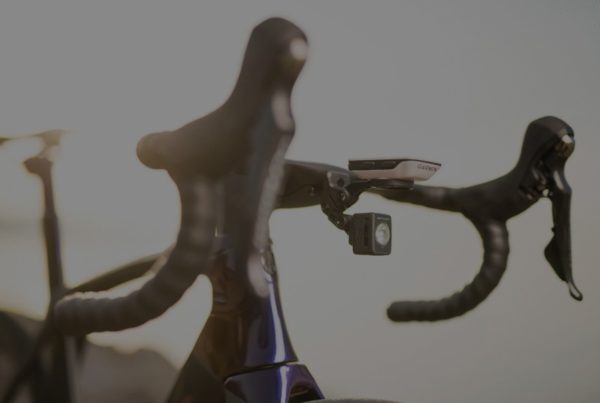Laws requiring drivers to give adequate space to cyclists are a step in the right direction, but law-enforcement efforts have room to improve.
Whether heading out for a training ride, commute, or leisurely spin, we put on our helmets and roll out into traffic. It seems as though nothing can spoil our inner sense of peace, except of course a punishment pass or an unsafe pass from a clueless driver. We all know what that feels like; the visceral feeling shakes us to our very core. It’s tough talking about it with non-cyclists because they don’t get it until it happens to them. Consequently, drivers habitually put cyclists at risk, which needs to change if we are ever going to live in a world with minimal road violence.
Take David Meek for example, who was struck by a reckless driver in Chattanooga, Tennessee, in March 2009. Meek died from the collision, and there was ample evidence that the driver violated Tennessee’s 3-foot-passing rule. Sadly, however, prosecutors refused to press charges. In fact, I found that the state of Tennessee had never charged anyone with a violation of the 3-foot-passing rule at the time.
Lack of enforcement is a real problem for bike safety because it essentially stonewalls the legislator’s decision to increase safety for cyclists. South Carolina Attorney Peter Wilborn puts it this way: “Safe passing laws were the first step, showing that policymakers are beginning to understand the realities of our roads. Enforcement of those laws is the next step; it will deter bad drivers and directly save lives.” Fortunately for us, individuals are working hard to increase enforcement.
Tennessee Attorney Amy Johnson, who focuses on bike law issues, is working hard to increase the enforcement of Tennessee’s 3-foot passing rule in Knoxville. Amy’s mission began in July 2016, after James Bacon was struck by a driver while riding in the bike lane. Evidence suggested that the driver violated Tennessee’s 3-foot-rule, yet law enforcement refused to investigate or press charges.
The Bacon case prompted Amy Johnson to form a partnership between the cycling community and the Knoxville Police Department to increase enforcement of Tennessee’s 3-foot-rule. Amy reached out to the traffic division to voice her concerns.
At a meeting with the traffic division, Amy and her bike advocacy colleagues presented concrete evidence of harassment toward cyclists, faulty police reports involving driver-on-cyclist collisions, and inadequate investigations of collisions after the fact. To be clear, this was not a “gripe session.” Rather, it was about proactively bringing the issues to law enforcement’s attention. After seeing the evidence, the police department acknowledged that work needed to be done to protect the lives of concerned citizens.
The police department’s kind reception was timely because Amy had also just met Christopher Stanson, who is the engineer of C3FT technology. A C3FT device can be attached to the handlebars of any bicycle, and it measures the distance between the bike and passing traffic, thereby capturing the evidence of an illegal pass. Amy presented C3FT devices to the Knoxville Police Department, and the traffic division agreed to give them a trial run.
Knoxville Police and Amy’s group of advocates rode equipped with C3FT technology for a couple months. In spite of the fact that the some of the trial participants were clearly law enforcement officers, the devices recorded that 60 percent of the violations of Tennessee’s 3-foot-rule were within less than 2 feet, and 46 percent of the violations were within 18 inches.
Amy compiled the data and sent it to the National Highway and Traffic Safety Administration (NHTSA) to entice NHTSA to conduct a government-sanctioned study of C3FT technology. NHTSA’s endorsement of the technology would increase safety for cyclists nationwide.
Back in Knoxville, the liaison between the cycling community and the police department created a lasting relationship. This friendship allows the cycling community to effectively voice its concerns as they arise. Safety and enforcement are improving as a result.
Based off of Amy’s efforts, it’s clear that we can reduce the frequency of a punishment pass or an unsafe pass from a clueless diver. We can begin by creating lasting relationships with local police departments. From there, we can look to various forms of technology to promote safety and enforcement of laws that aim to keep us safe. Thus, we have the power to move beyond our current reality and toward vision zero — a world where serious and fatal collisions are rare for cyclists.
Research and drafting assistance provided by Josh Sherman, JD candidate 2019.
This article, Why ‘3 feet to pass’ laws must be enforced, was originally published on VeloNews on February 22, 2019.
Now read the fine print:
Bob Mionske is a former competitive cyclist who represented the U.S. at the 1988 Olympic Games (where he finished fourth in the road race), the 1992 Olympics, as well as winning the 1990 national championship road race.
After retiring from racing in 1993, he coached the Saturn Professional Cycling team for one year before heading off to law school. Mionske’s practice is now split between personal-injury work, representing professional athletes as an agent and other legal issues facing endurance athletes (traffic violations, contract, criminal charges, intellectual property, etc.).
Mionske is also the author of “Bicycling and the Law,” designed to be the primary resource for cyclists to consult when faced with a legal question. It provides readers with the knowledge to avoid many legal problems in the first place, and informs them of their rights, their responsibilities, and what steps they can take if they do encounter a legal problem. If you have a cycling-related legal question please send it to Bob, and he will answer as many of these questions privately as he can. He will also select a few questions to answer in this column. General bicycle-accident advice can be found at bicyclelaw.com.
Important notice:
The information provided in the “Legally Speaking” column is not legal advice. The information provided on this public website is provided solely for the general interest of the visitors to this website. The information contained in the column applies to general principles of American jurisprudence and may not reflect current legal developments or statutory changes in the various jurisdictions and therefore should not be relied upon or interpreted as legal advice. Understand that reading the information contained in this column does not mean you have established an attorney-client relationship with attorney Bob Mionske. Readers of this column should not act upon any information contained in the website without first seeking the advice of legal counsel.
@ Bob Mionske 2019. All Rights Reserved.




